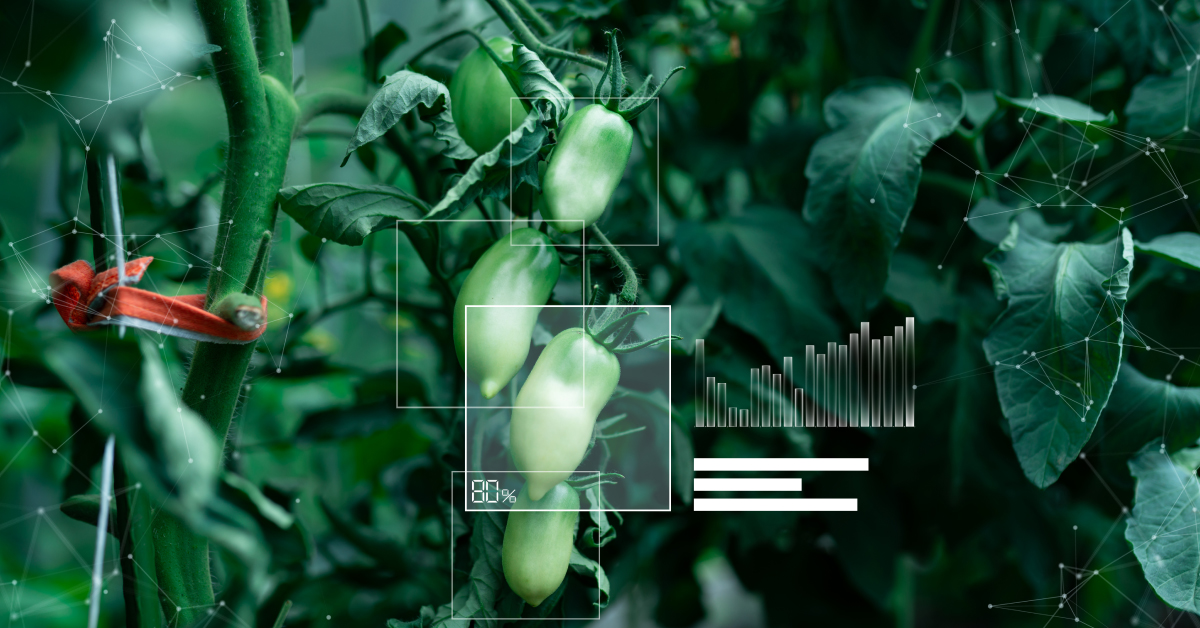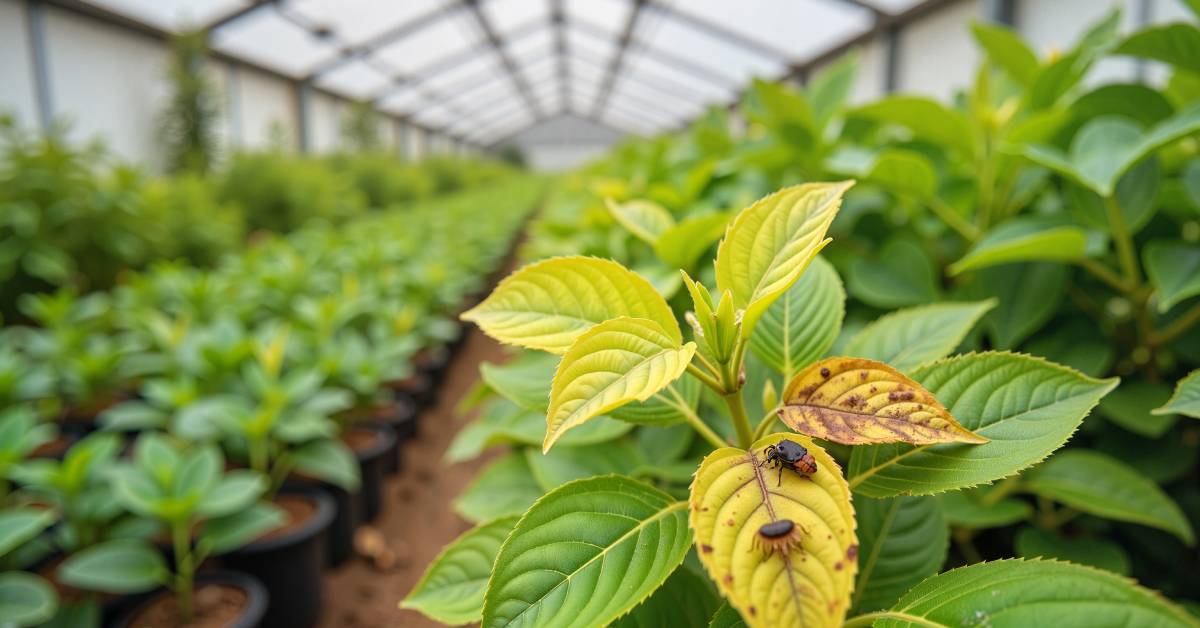New technologies, specifically artificial intelligence, redefine any industry’s approach to providing a secure and resilient ecosystem. In fact, AI is leading this technological transformation by providing a reliable tool for resolving food safety issues.
From early hazard detection and predictive analytics to real-time monitoring and precision management, AI has become essential for food industry stakeholders. This blog digs deep into the influence of AI in improving food safety standards.
By navigating the real-world advantages and exploring EcoDocs, we will see how AI not only improves compliance and risk mitigation but also builds the foundation for a more secure and trustworthy future in the field of AI in food safety.
Opportunities for Artificial Intelligence in the Food Industry
Understanding the Role of AI in Food Safety
AI is an advanced technique that enables robot systems to simulate intelligence similar to that of humans. It allows them to examine data, learn from it, and make deft decisions.
Contamination by food safety hazards can happen at any point in the food supply chain. Analyzing huge datasets for potential contamination hazards promotes early hazard detection. AI-driven risk evaluations optimize compliance management and quality control while fostering proactive decision-making.
Moreover, AI’s impact on food safety also supports resource optimization, which results in effective operations.
The food business benefits from AI integration through increased quality optimization and improved safety.
AI in food safety protects consumer health through its analytical prowess, making it a vital tool.
How AI Is Creating an Impact on Food Safety
Although there are several ways to prevent poor food quality, the incorporation of AI in food safety ushers in a new era of proactive risk management. Due to AI’s remarkable powers, huge data sets may be quickly analyzed, allowing for the most accurate early hazard detection ever.
AI enables stakeholders to act quickly and wisely by spotting patterns and abnormalities that conventional techniques might miss.
Moreover, AI-driven predictive models offer a preemptive approach to contamination prevention, minimizing potential outbreaks and recalls. The technology’s ability to process real-time information and provide actionable insights ensures quicker response times in critical situations.
AI in food safety provides faster insights and more effective prevention strategies. It is a powerful tool for strengthening food safety measures, reducing consumer health risks, and increasing public confidence. However, to fully leverage AI’s potential, businesses must assess their AI readiness, ensuring they have the necessary infrastructure and processes to effectively integrate AI solutions into their food safety protocols. Engaging with an experienced AI solutions provider can be crucial in navigating this integration, offering tailored strategies for data collection, algorithm implementation, and real-time monitoring.
Implementing AI-Powered Food Safety Measures
Data Collection and Integration
Implementing AI-powered risk assessment food safety measures depends on careful data integration and collection. It is crucial to compile many data sources, ranging from supplier information to industrial procedures.
This integrated information is the foundation for AI analysis, enabling the technology to identify complex patterns and deviations. The accuracy of this data’s risk assessment and early hazard detection directly affects how well AI performs these tasks.
Thus, a coordinated and thorough data approach not only improves food safety procedures but also maximizes AI’s potential to fundamentally alter the sector’s safety landscape.
Machine Learning Algorithms for Pattern Recognition
Modern risk assessment in many areas, including food safety, is advancing thanks to machine learning algorithms for pattern detection. These algorithms process numerous datasets, identifying tiny patterns and abnormalities that might escape human inspection.
By training on historical data, Machine learning models can discover trends linked to contamination, spoilage, or risks by training on historical data. The computers quickly evaluate new data, warning stakeholders of potential hazards as they come into known patterns.
This quick and accurate pattern identification improves the food business’s ability to guarantee safety and quality throughout the supply chain.
Real-Time Monitoring and Alerts
AI-enabled real-time monitoring and prompt alarms have become essential for maintaining food safety requirements. Thanks to these technologies, the various phases of the food supply chain management are continuously and automatically monitored.
AI in food safety can help spot deviations from established norms by gathering and evaluating data in real time. This proactive method may deliver quick alarms to the appropriate parties once possible dangers, like temperature changes or contamination, are identified.
As a result, remedial steps can be quickly initiated, limiting the escalation of risks and guaranteeing customer safety.
The combination of real-time surveillance like a commercial CCTV system installation and AI-driven alerts reduces the possibility of recalls and raises customer confidence in food safety software, artificial intelligence procedures, and operational effectiveness.
Predictive Analytics for Risk Assessment
Food contamination refers to harmful substances, pathogens, or toxins in food. Businesses monitor their food chain closely to avoid any form of contamination. Predictive analytics can help businesses revolutionize risk assessment by foreseeing potential safety hazards and contamination risks.
Predictive models meticulously analyze historical data to identify hidden patterns, correlations, and emerging trends. These insights empower stakeholders to anticipate and mitigate risks before they escalate.
Predictive analytics enhance the accuracy of risk forecasts by considering factors such as supplier information, production conditions, and environmental variables. This proactive approach transforms how safety measures are implemented, shifting from reactive to preventive strategies.
As a result, the industry can avert contamination, spoilage, and other hazards, minimizing health risks and safeguarding consumer trust. The integration of predictive analytics amplifies the efficacy of food safety, ensuring a proactive stance against potential threats.
Real-World Benefits of AI in Food Safety
Early Disease Detection
Early disease identification is greatly facilitated by AI-driven sensors and data analysis, directly improving consumer health. By quickly identifying pollutants in food products and the supply chain, these technologies allow for prompt intervention.
AI lessens health risks by identifying potential dangers before they reach consumers, lowering the possibility of large-scale outbreaks. In addition to preserving public health, this proactive strategy also increases customer faith in the security of food items.
Incorporating AI-driven sensors in food safety procedures is a striking illustration of how technology promotes a safer and healthier environment for consumption.
Precision Monitoring
Precision farming offers an efficient and reliable way of producing food. AI’s precision monitoring ability can help farmers minimize waste and maximize quality through meticulous oversight of production processes.
By analyzing real-time data, AI optimizes resource utilization, curbing unnecessary wastage.
It enhances sustainability and ensures that products meet stringent quality standards, bolstering efficiency across the food industry.
Enhanced Traceability
Using AI in the food industry makes it possible to track and trace food goods precisely, improving accountability and transparency throughout the supply chain. AI analyzes data from multiple phases to ensure correct information about origin, processing, and distribution.
It allows companies to react quickly to recalls or other problems, enhancing consumer confidence and reaffirming the industry’s dedication to safety.
Rapid Recall Management
AI accelerates product recall procedures, swiftly addressing safety concerns. AI swiftly identifies affected batches and tracks their distribution, ensuring timely and targeted recalls.
This expedites response times, safeguards public health, and underscores the industry’s dedication to consumer safety and satisfaction.
Customized Safety Protocols
Artificial intelligence empowers customized safety standards by evaluating data to address specific dangers in various food production scenarios. This tailoring ensures that preventive measures are in line with each location’s particular difficulties.
Using artificial intelligence in the food industry helps improve safety measures by identifying flaws and making specific recommendations. This customized approach strengthens the industry’s ability to successfully manage risks and uphold the highest standards of food safety.
Using Food Safety Quality and Compliance Management Software
For every company operating in the food industry, regulatory compliance is essential. Government restrictions provide severe penalties for non-compliance, including fines, closure orders, and even criminal charges, for non-compliance. To guarantee the quality and safety of food products, businesses must comprehend and abide by all applicable rules.
The HACCP system is a proactive strategy that helps businesses identify possible risks to food safety before they occur. It involves identifying critical control points (CCPs) in the manufacturing process and applying safety precautions to limit these risks.
The continual monitoring and evaluation of these CCPs guarantees that food safety regulations are constantly maintained.
However, following HACCP guidelines and other general compliance standards can be quite difficult, particularly for large-scale businesses with complex supply chains. This is where food safety compliance software can significantly help these companies.
The automation of operations like temperature monitoring, reporting, and document control can help companies save time and money. Moreover, by ensuring that everyone in the company knows their responsibilities and obligations regarding food safety, this software helps improve communication inside the company.
Additionally, by predicting and proactively identifying and addressing any concerns about food safety, these software systems assist in managing risk and stopping outbreaks. Compliance management software makes it simpler to prove regulatory compliance during audits, demonstrating dedication to food safety and high quality.
How EcoDocs Facilitates Compliance
EcoDocs, the food safety quality and compliance management software, is a digital hub for all your food safety documentation and processes. One of Its Unique Advantages Is Its Potential to make it easier to comply with regulatory norms.
The technology streamlines record-keeping and stores crucial information in a safe digital space that can be accessed during food safety inspections.
This decreases the likelihood of errors associated with manual record-keeping while improving accuracy.
EcoDocs further excels in helping businesses adhere to stringent regulations by providing instant alerts. The AI-driven system can identify deviations from established norms and promptly alert relevant parties, ensuring corrective actions are taken swiftly.
This proactive approach mitigates risks, minimizes the potential for contamination, and contributes to a safer food supply chain.
EcoDocs represents a significant leap forward for AI in food safety. By combining advanced AI capabilities with comprehensive data management, the platform enhances compliance, early hazard detection, and overall risk mitigation.
Conclusion
In conclusion, the integration of AI in food safety marks a huge advancement for the food industry. From early hazard identification and predictive analytics to real-time monitoring and precision management, AI is changing how stakeholders approach and improve food safety regulations.
AI has enormous potential in food safety. Its analytical capabilities enable early hazard detection while also enhancing compliance management and quality control.
As we move forward, food safety compliance software like Ecodocs, which combines advanced AI with data management, will not only help food safety continue to improve but also help the food industry address challenges proactively by protecting consumer health and instilling confidence in the safety and quality of food products.
FAQs
What role does artificial intelligence play in enhancing food safety?
Artificial intelligence enhances food safety through early hazard detection, real-time monitoring, and predictive analytics. It enhances risk assessment, ensures regulatory adherence, and facilitates swift responses to safety issues.
How does AI contribute to the early detection of foodborne hazards?
By analyzing massive datasets to find minute patterns and abnormalities that suggest potential contamination or safety problems, AI helps with the early detection of foodborne dangers. It quickly processes data from different supply chain stages, enabling proactive alerts and effective intervention.
Can artificial intelligence improve traceability in the food supply chain?
Artificial intelligence can enhance traceability in the food supply chain by analyzing data across stages, ensuring accurate tracking, and expediting responses to recalls or safety issues. This approach bolsters transparency, quality assurance, and consumer confidence in the integrity of food products.
How does “EcoDocs” support food businesses integrating AI for safety measures?
By smoothly integrating AI for safety measures, “EcoDocs” aids the food industry. It facilitates compliance management, automates record keeping, and allows for real-time monitoring.
Using AI’s power, “EcoDocs” improves risk assessment, early hazard detection, and recall management.
What are the potential long-term benefits of adopting AI for food safety?
Adopting AI for food safety has many long-term advantages. AI-driven long-term techniques improve risk management by averting potential outbreaks and recalls.
Predictive analytics and early danger detection lower health risks and increase consumer confidence. AI’s real-time monitoring assures constant adherence to laws, fostering openness.
Additionally, resource optimization reduces waste and increases quality, which helps to promote sustainability. Solutions like “EcoDocs” integrate AI, expedite processes, enhance recall management, and boost brand reputation.







